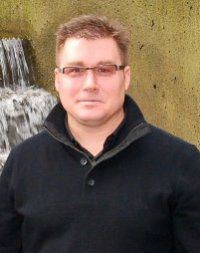Nuclear medicine, X-rays,CT scans, MRI imaging, ultrasounds -- if you are a patient, the world of medical radiation imaging is often confusing and misunderstood.
For doctors, the information these tests reveal is critical in patient care and in many cases, lifesaving.
Each is a diagnostic tool that requires not only specialized equipment but the services of a well-trained technologist. The people who take those images aren't doctors, and they aren't nurses or lab technologists. But they are an essential part of the medical team at University Hospital of Northern B.C.
"We have a wide variety of people who are very skilled and specialized in what they do and it's important to highlight what they do and what a contribution they are to the health team," said Lorraine Guillet, the chief technologist at UHNBC.
"Across Canada, what we find is patients don't realize how specialized technologists are and what we do. They are just such a crucial part of the running of a hospital. That CT scan gives definitive diagnosis in treating the patient, it's so heavily relied on by physicians, but the patients don't really understand that."
What patients do understand is that some diagnostic tests take a long time to schedule. Part of the reason for the backlog of patients, Guillet said, is the time it actually takes for some scans. For a Magnetic Resonance Imaging (MRI) scan, that can last up to two hours for one patient. It all depends on how many different views of body structure are required. Guillet said UHNBC averages about 18 MRI scans per day.
"There are only so many we can do in a day, and our technologists try very hard to get as many patients as they can during the day," said Guillet.
"There are only three MRI technologists in all of Northern Health. It's such a specialty, and it's the same with nuclear medicine, there are three full-time people but now, we have the benefit now of having a casual nuclear medicine tech in town. UHNBC, Terrace and Fort St. John are the only nuclear medicine departments in all of Northern Health."
Because they are few in number, when they aren't at work, medical radiation technologists are never far from their pagers. It's not that unusual for them to be called to the hospital in the middle of the night to deal with an emergency. In the case of an orthopedic surgeon inserting a rod into a leg bone or pins to repair a hip, those doctors rely on an X-ray technologist to provide live images during surgery.
"It's such a broad spectrum of the things we do," said Guillet. "An X-ray technologist is in the emergency room, they're in the operating room, the nursery and the ICU. It's a very interesting job and it changes with technology constantly."
As part of Medical Radiation Technologists Week, Northern Health organized a one-day conference held Sunday which drew 42 technologists from Prince George, Prince Rupert, Terrace, Vanderhoof and Fort St. John. Guillet hopes to make the conference an annual event.



